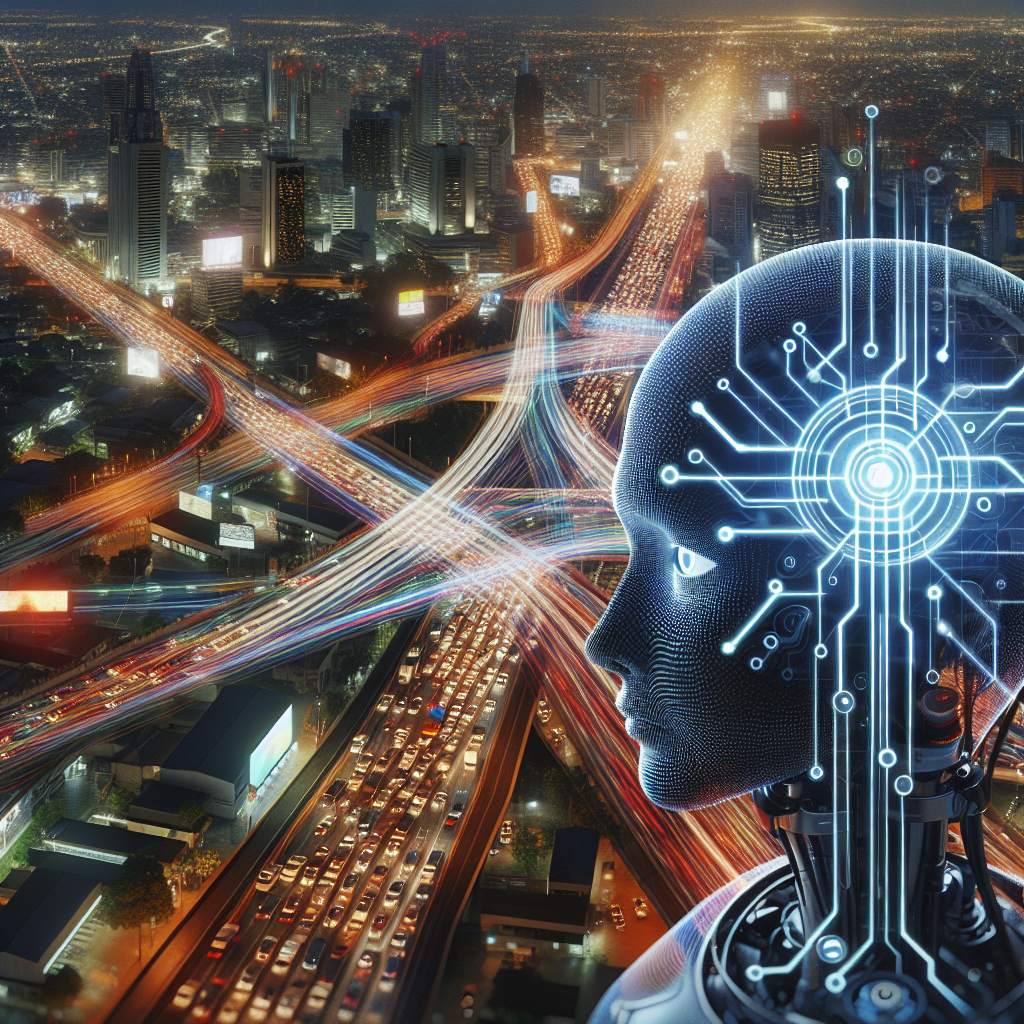In today’s fast-paced world, managing traffic efficiently is crucial for ensuring the smooth flow of people and goods. Traffic congestion not only leads to wasted time and increased fuel consumption but also has a negative impact on the environment. As cities continue to grow and urbanization increases, the need for effective traffic prediction and management becomes even more pressing.
Artificial intelligence (AI) has emerged as a powerful tool for addressing the challenges of traffic prediction and management. By leveraging AI algorithms and real-time data, transportation authorities can gain valuable insights into traffic patterns, identify congestion hotspots, and make informed decisions to optimize traffic flow. In this article, we will explore how AI can be used for real-time traffic prediction and management, and the benefits it can bring to transportation systems.
AI for Real-Time Traffic Prediction
One of the key areas where AI can be leveraged in transportation is in real-time traffic prediction. Traditional traffic prediction models rely on historical data and statistical methods to forecast traffic conditions. While these models can provide valuable insights, they often struggle to accurately predict the dynamic nature of traffic flow.
AI, on the other hand, can analyze vast amounts of real-time data from sources such as traffic cameras, sensors, and GPS devices to predict traffic patterns with greater accuracy. Machine learning algorithms can detect patterns and trends in the data, allowing transportation authorities to anticipate congestion before it occurs and take proactive measures to alleviate it.
By predicting traffic conditions in real-time, AI can help transportation authorities make more informed decisions, such as adjusting traffic signal timings, rerouting traffic, or deploying additional resources to manage congestion effectively. This can lead to reduced travel times, lower fuel consumption, and improved air quality in urban areas.
Benefits of AI for Real-Time Traffic Prediction
There are several benefits to leveraging AI for real-time traffic prediction in transportation:
1. Improved Accuracy: AI algorithms can analyze large volumes of real-time data to predict traffic conditions with greater accuracy than traditional models. This allows transportation authorities to make more informed decisions and respond to changing traffic conditions in real-time.
2. Enhanced Efficiency: By predicting traffic patterns in advance, AI can help transportation authorities optimize traffic flow and reduce congestion. This can lead to shorter travel times, lower fuel consumption, and improved overall efficiency in transportation systems.
3. Proactive Decision-Making: AI enables transportation authorities to anticipate congestion before it occurs and take proactive measures to address it. By adjusting traffic signal timings, rerouting traffic, or deploying resources strategically, authorities can effectively manage traffic flow and minimize disruptions.
4. Cost Savings: By reducing congestion and improving traffic flow, AI can help transportation authorities save costs associated with fuel consumption, vehicle wear and tear, and lost productivity due to delays. This can lead to significant savings for both transportation agencies and commuters.
AI for Traffic Management
In addition to real-time traffic prediction, AI can also be used for traffic management in transportation. By analyzing real-time data and traffic patterns, AI algorithms can optimize traffic signal timings, manage lane closures, and coordinate traffic flow to reduce congestion and improve safety on the roads.
For example, AI-powered traffic signal control systems can adjust signal timings based on real-time traffic conditions, reducing wait times at intersections and improving overall traffic flow. These systems can also detect and respond to incidents such as accidents or road closures, rerouting traffic to minimize disruptions and ensure the safety of road users.
AI can also be used to optimize lane assignments on highways and arterials, ensuring that traffic is distributed efficiently and preventing bottlenecks. By analyzing data from sensors and cameras, AI algorithms can identify congestion hotspots and recommend changes to lane configurations to alleviate traffic flow.
FAQs
Q: How does AI predict traffic conditions in real-time?
A: AI algorithms analyze real-time data from sources such as traffic cameras, sensors, and GPS devices to detect patterns and trends in traffic flow. By leveraging machine learning techniques, AI can predict traffic conditions with greater accuracy than traditional models.
Q: What are the benefits of using AI for real-time traffic prediction?
A: AI can help transportation authorities make more informed decisions, optimize traffic flow, and reduce congestion. By predicting traffic conditions in advance, AI can improve efficiency, reduce travel times, and save costs associated with fuel consumption and delays.
Q: How can AI be used for traffic management in transportation?
A: AI algorithms can optimize traffic signal timings, manage lane assignments, and coordinate traffic flow to reduce congestion and improve safety on the roads. AI-powered systems can adjust signal timings based on real-time traffic conditions, reroute traffic in response to incidents, and recommend changes to lane configurations to alleviate congestion.
Q: What are some examples of AI applications in traffic management?
A: AI can be used for traffic signal control, lane assignment optimization, incident detection and response, and route planning. By analyzing real-time data and traffic patterns, AI algorithms can help transportation authorities make more informed decisions and manage traffic flow effectively.
In conclusion, leveraging AI for real-time traffic prediction and management in transportation can bring significant benefits to transportation systems. By analyzing real-time data, detecting patterns and trends, and making proactive decisions, AI algorithms can help optimize traffic flow, reduce congestion, and improve overall efficiency in urban areas. As cities continue to grow and traffic congestion becomes a major challenge, AI offers a powerful solution for ensuring the smooth flow of people and goods on the roads.

